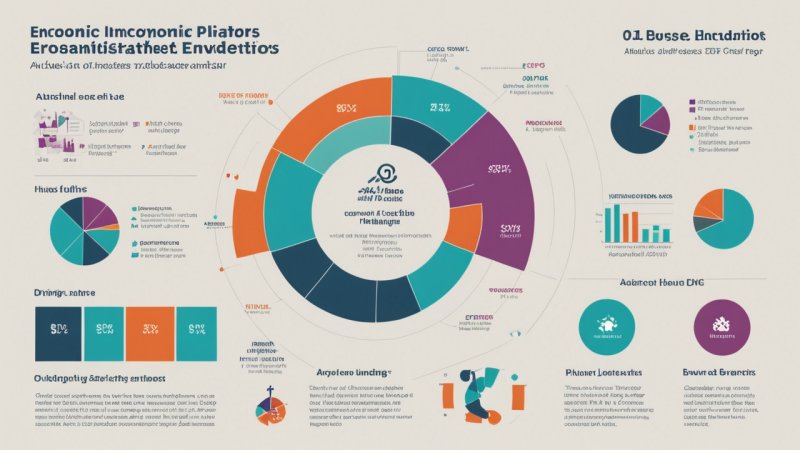In the dynamic world of business, understanding the economic landscape is crucial for effective planning and decision-making. Economic indicators serve as vital tools for businesses to gauge the health of the economy, forecast trends, and make informed strategic choices. From GDP growth rates to unemployment figures, these indicators provide insights that can significantly impact a company’s operations and long-term viability. This article delves into the various types of economic indicators, their importance in business planning, and how companies can leverage them to enhance their strategic initiatives.
What are Economic Indicators?
Economic indicators are statistical metrics that provide information about the overall economic performance of a country or region. They are classified into three main categories: leading, lagging, and coincident indicators. Each type serves a different purpose and offers unique insights into economic conditions.
Leading Indicators
Leading indicators are predictive in nature, offering insights into future economic activity. They are typically used by businesses to anticipate changes in the economic environment. Common examples include:
- Stock Market Performance: A rising stock market often indicates investor confidence and can predict economic expansion.
- New Orders for Durable Goods: An increase in new orders suggests future production increases, signaling economic growth.
- Consumer Confidence Index (CCI): Higher consumer confidence often leads to increased spending, driving economic activity.
Lagging Indicators
Lagging indicators reflect the economy's past performance and are often used to confirm long-term trends. They include:
- Gross Domestic Product (GDP): GDP measures the total value of goods and services produced in a country, indicating overall economic health.
- Unemployment Rate: This indicator shows the percentage of the labor force that is unemployed, reflecting the economy's capacity to create jobs.
- Corporate Profits: Changes in corporate profits provide insights into business health and economic conditions.
Coincident Indicators
Coincident indicators move in tandem with the economy and provide real-time insights into economic performance. Examples include:
- Retail Sales: This indicator measures consumer spending and is a direct reflection of economic activity.
- Industrial Production: It tracks the output of the industrial sector, indicating current economic performance.
- Personal Income: Changes in personal income levels are directly correlated with consumer spending and overall economic health.
The Importance of Economic Indicators in Business Planning
Understanding economic indicators is essential for businesses for several reasons:
Informed Decision-Making
Economic indicators provide data-driven insights that help businesses make informed decisions. For instance, if a company observes a downturn in consumer confidence, it may choose to hold off on new investments or adjust its marketing strategies.
Risk Management
By monitoring economic indicators, businesses can identify potential risks and challenges in the market. This foresight allows companies to develop contingency plans and mitigate risks associated with economic downturns.
Strategic Planning
Economic indicators help businesses align their strategic goals with market realities. For example, if unemployment rates are rising, a company might focus on cost-cutting measures or explore new markets to sustain growth.
How to Use Economic Indicators in Business Planning
To effectively utilize economic indicators in business planning, companies should follow these steps:
1. Identify Relevant Indicators
Not all economic indicators will be relevant to every business. Companies should identify which indicators are most applicable to their industry and market.
2. Monitor Trends Regularly
Economic indicators can change rapidly. Businesses should establish a routine for monitoring these indicators to stay informed about shifts in the economic landscape.
3. Analyze Data in Context
It’s essential to analyze economic data in context. Businesses should consider external factors, such as geopolitical events or technological advancements, that may influence economic conditions.
4. Incorporate Insights into Business Strategy
Insights gained from economic indicators should be integrated into the overall business strategy. This ensures that the company's objectives align with current and projected economic conditions.
Case Studies: Successful Use of Economic Indicators
Several companies have successfully utilized economic indicators to enhance their business strategies:
Case Study 1: Retail Giant
A leading retail chain closely monitored the Consumer Confidence Index and adjusted its inventory levels based on projected consumer spending. By anticipating changes in consumer behavior, the company was able to optimize stock levels and increase sales.
Case Study 2: Manufacturing Firm
A manufacturing firm analyzed new orders for durable goods to forecast production needs. By aligning production schedules with anticipated demand, the company reduced waste and improved operational efficiency.
Challenges in Interpreting Economic Indicators
While economic indicators are valuable tools, interpreting them can pose challenges:
Data Limitations
Economic indicators are often subject to revisions, and initial data may not accurately reflect the true state of the economy. Businesses must be cautious when making decisions based on preliminary figures.
Complex Interrelationships
Economic indicators do not operate in isolation. Changes in one indicator can affect others, making it essential to analyze them collectively to gain a comprehensive understanding of economic conditions.
External Influences
External factors, such as government policies or global events, can impact economic indicators. Businesses should consider these influences when interpreting data.
Conclusion
Economic indicators play a critical role in business planning, providing insights that help companies navigate the complexities of the economic landscape. By understanding the different types of indicators, their importance, and how to effectively utilize them, businesses can enhance their decision-making processes, mitigate risks, and align their strategies with market realities. As the economy continues to evolve, staying informed about economic indicators will remain a vital component of successful business planning.






